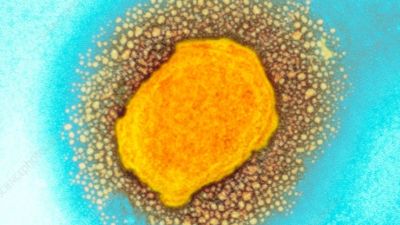Monkeypox: The answers to the most asked questions

With at least 574 confirmed cases in the UK as of June 16, and many more worldwide, monkeypox is grabbing headlines and causing some concern among governments and experts.
But despite community transmissions rising in countries where the virus is not usually seen, the science community has urged caution.
While so much is yet unknown about the virus - which comes at the tail end of the Covid pandemic - people are still looking for answers. Here are the most Google-ed questions in the UK about monkeypox.
How many cases of monkeypox are there?
The total number of confirmed cases in the UK is 574 as of June 16.
There are currently 550 confirmed cases in England, 16 in Scotland, two in Northern Ireland and six n Wales.
What are the symptoms of monkeypox?
It usually takes between five and 21 days for the first symptoms of the infection to appear.
The first symptoms of monkeypox include:
a high temperature
a headache
muscle aches
backache
swollen glands
shivering (chills)
exhaustion
A rash, which often begins on the face before spreading, usually appears one to five days after the first symptoms.
For more on the symptoms, see Monkeypox: What is the rare infection and what are the symptoms? Is monkeypox deadly?
The disease is usually mild but can cause severe illness in some cases.
Virologists recognise two strains of monkeypox virus; the Congo Basin strain can be fatal in as many as 10% of cases, while the West African strain (which is the one currently in the UK) is less transmissible and causes less severe disease and fewer deaths (its mortality rate is about 1%).
What is the treatment for monkeypox?
There is currently a monkeypox vaccine under development, but in the meantime, the smallpox vaccine and other treatments are being used to control any monkeypox outbreaks.
The UK government has stocks of the smallpox vaccine, which is being offered to very close contacts of those who have been affected.
Those at the highest risk of contracting the disease are being asked to self-isolate at home for 21 days, with others warned to be on the lookout for symptoms.
An antiviral agent developed for the treatment of smallpox has also been licensed for the treatment of monkeypox, the United Nations said.
How do you catch monkeypox?
The virus enters the body through breaks in the skin, some of which may not be visible, and through the eyes, mouth nose or other parts of the respiratory tract, which is thought to be the primary source of person-to-person contact. It can also be spread through touching clothing, bedding or towels used by someone with the monkeypox rash, and through the coughs and sneezes of somebody with the infection.
Monkeypox is not usually easily passed on, it requires very close contact. Dr Sarah Jarvis told ITV News someone would "literally have to sneeze in your face" for the infection to spread.
For more information on how monkeypox is transmitted, see How does monkeypox spread and how transmissible is it?
'It is not usually easy to pass on' - Dr Sarah Jarvis says monkeypox is not easily spread but if someone thinks they are infected, or has been in close contact with someone who has the tell-tale rash, they should ring NHS 111
Is monkeypox an STI?
Monkeypox is not usually a sexually-transmitted infection, but it can be passed on by direct contact during sex.The current cluster of monkeypox cases is in men who have sex with men, and, because monkeypox is spread through close contact, health authorities have highlighted the sexuality of the latest cases.
The UK Health Security Agency said: "The most recent cases are in gay, bisexual and other men who have sex with men communities, and as the virus spreads through close contact, we are advising these groups to be alert to any unusual rashes or lesions on any part of their body, especially their genitalia, and to contact a sexual health service if they have concerns."
But experts warn against drawing conclusions about how the virus was transmitted.
Dr Michael Skinner, Reader in Virology, Imperial College London, said: “By nature, sexual activity involves intimate contact, which one would expect to increase the likelihood of transmission, whatever a person’s sexual orientation and irrespective of the mode of transmission.”